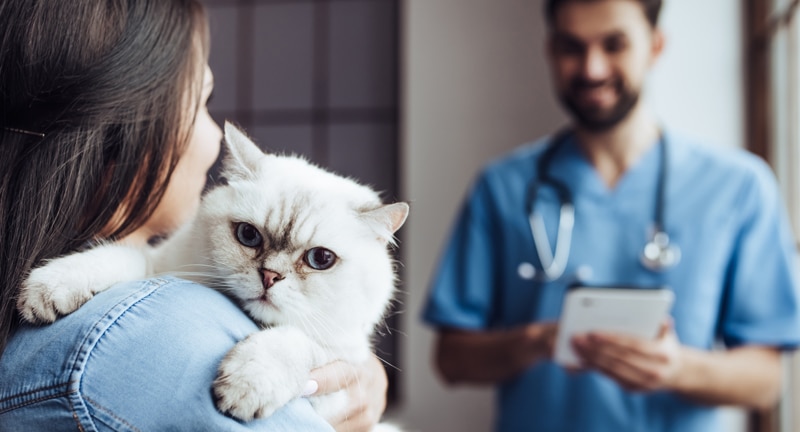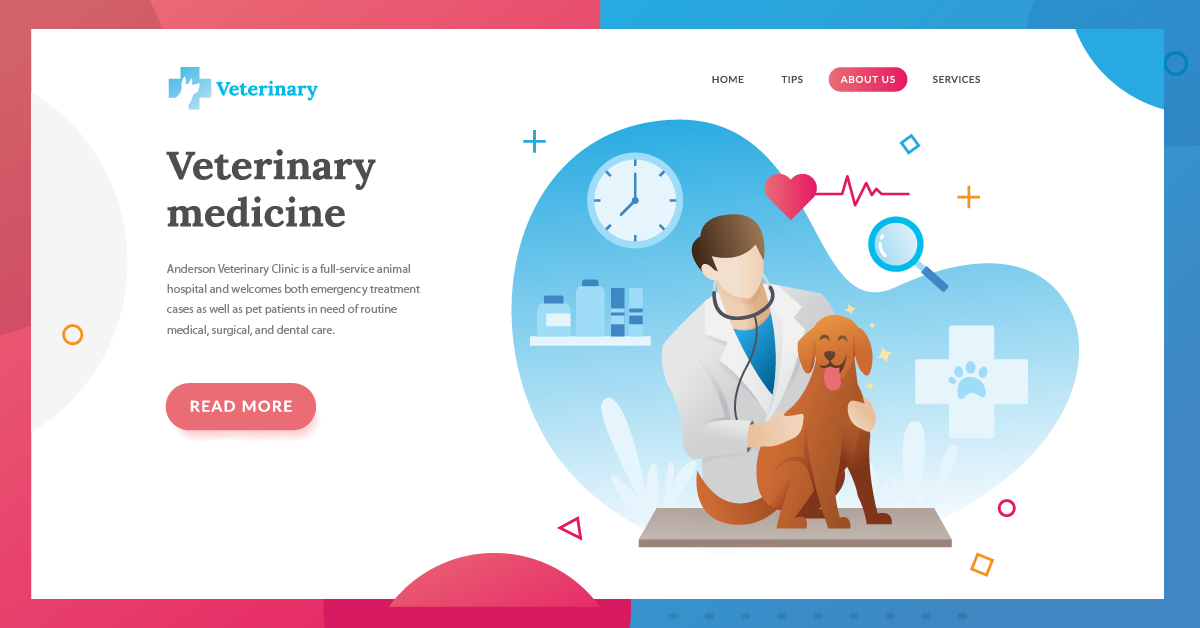What Your Clients Need to Know About Proper Pet Care
So, your newest client finally decided to take the big step and become a pet owner. Hooray! Owning a pet can be such a rewarding feeling, but it’s important to note that it involves much more than just playing fetch in the yard. And you can create a lifelong client by providing the resources needed for this first time experience.
Your clients may have done their research beforehand and know about their pet’s needs already, but if they haven’t, encourage them to start right now. For your clients, knowing their pet’s eating habits, how much exercise they need, and socialization tendencies are only a few factors included in what it takes to be the best owner they can possibly be. And by having this information at the ready, you can encourage healthy pet habits early on.

They’re caring for another life and it is their responsibility to make sure they live a great one.
Pets are companions and they require time and dedication.
Pet ownership is an important job that must be done properly every single day to ensure the safety, health, and optimal growth of their animal. February is Responsible Pet Owners Month and we’re here to help you teach your new clients the 8 best practices of being a great pet owner – and how this can work into your marketing plan!
8 Ways to Be a Responsible Pet Owner
1. Training
Training a pet and teaching it obedience is one of the best ways to ensure its safety and the safety of other people or animals. This is also a good way to handle any behavioral issues their pet may be having.
For example, if they have a dog and they chase everything (or everyone) they see when going on walks, they need to be taught to come when their name is called. Teaching them to sit and wait until whatever is distracting them passes is also a good practice to put into action. They can be kept on a lease as well whenever they’re taken into a public place.
When planning out a potential “new pet plan” with an owner, consider making recommendations on good trainers in the area or forming partnerships with trainers to come in and introduce themselves to clients after the first visit.
2. Socialization
Most pets need the opportunity to interact and play with others so that they can learn to become comfortable with other animals and humans. This way they won’t experience fear, anxiety, or aggression every time they encounter another animal or stranger.
Depending on what type of animal your client has, improper socialization can literally make their pet physically ill. Guinea pigs are a very popular pet for young children but one mistake that some new owners make is only bringing one home.
Guinea pigs are naturally very social creatures and they need another cavy in their cage with them to have a full, healthy life. When they are alone for too long it can negatively affect them physically and psychologically. But if even one other guinea pig is brought into their cage, it allows them to bond, keep each other active, and take care of one another.
By setting up puppy play dates or meet-ups in a neutral area such as an animal-safe park near your practice, or another area close by, you can facilitate proper socialization at the right times so owners are aware of these concerns. These community events can foster a growing relationship between your practice and your clients.
3. Nutrition
Eating habits are one of the most important parts of a pet’s life. What your clients feed them gives the animal the strength they need to live a healthy life. No matter what type of pet they have, they need a well-balanced diet full of quality food that will give them all the nutrients their bodies need to function properly.
As you help the owners identify what type of food is best for their pet, you can also refer them to where they can purchase the food recommended. Or better yet, carry it in an online store for them to purchase and pick up at their next visit! Another great resource is having examples of balls and treats that your practice recommends on the ready so that you can give it to the owner at their appointment.
4. Grooming and Hygiene
Making sure that your client properly cleans their pet is directly correlated to their health. It’s important to know how often and what type of products the animal needs to make sure this happens. Some pets need to be washed and groomed more than others while some don’t need it at all. Cats clean themselves so they do not need to bathe the way dogs do.
The hygiene of your patient involves their owner checking that every part of their body is as healthy as possible. That includes their ears, nails, fur, and teeth. They may need their nails trimmed regularly or their coats brushed and trimmed every so often. But it’s important to stay on top of their grooming and hygiene to avoid any possible problems.
One aspect of hygiene that some owners often overlook is their dental hygiene. Dental disease is one of the most common issues that veterinarians see in many pets and it easily avoidable when owners take proper care of their teeth. Be sure to promote your dental hygiene program as well as any grooming offered at your office. You can also send reminders to your clients via a patient relationship management system so that they come in at regular intervals.
5. Pet Proofing The Home
Safely securing anything in their home that could potentially hurt their pet is something that should be done before welcoming one into their home. Animals can be curious and get into things that can cause them harm and that is something they want to avoid at all costs.
If your client already owns a pet, they should know to avoid bringing new things into the home that would be hazardous for them. One way to expand your practice is to partner with a local pet safety expert and pair them with new pet owners to point out what they could improve in their home to keep their pets (and other family members) safe.
This isn’t limited to just new pets. Should an existing client be expecting a child, you could also offer tips and pointers for bringing baby home and acclimating the existing furry family members to this new addition.
6. Exercise
Keeping their pet active keeps them healthy and helps to avoid any medical issues that could arise from lack of exercise. Taking them for walks or letting them out of their cage is beneficial and allows them to let go of some bottled up energy.
Many people do crate training when they get new puppies but keep them in for far too long. They should not be kept in a crate longer than 3 hours because younger dogs cannot control their bladder as well as older dogs. They need to be let out more often to relieve themselves.
If an older dog is being left in a crate, they can stay inside for longer periods of time. But, whether a dog is young or old, leaving them in the crate for too long is not ideal and can cause stress and loneliness.
Try to encourage your clients to arrange for someone to go to their house while they’re away and walk the dog so they can stretch and get some fresh air. Or, better yet, if you offer boarding, consider mentioning your services at their first vet visit.
7. Clean Up After Pets Regularly
Cleaning up the pet’s area or any place where they may have relieved themselves prevents the spread of diseases and keep them comfortable. An animal should never have to sit in their own urine or feces. If your clients would not want to live in an environment like that, why would their pet? They need to keep it clean and change their bedding or litter boxes as needed.
If they own a dog, they should be picking up after it when going on walks. It keeps the environment clean and prevents any accidents for others.
Consider adding pet cleaning products, poop bags, etc in your office or in your online store so that clients have easy access to the items they need when they head back home.
8. Vet Visits
 For our final tip, we want to state how crucial it is to have regularly scheduled veterinary visits for their pet. They require checkups just like humans to ensure that everything is working perfectly fine.
For our final tip, we want to state how crucial it is to have regularly scheduled veterinary visits for their pet. They require checkups just like humans to ensure that everything is working perfectly fine.
If their pet seems sicks or like something may be different internally or externally, let them know that they should make an appointment with you as soon as possible so you can assess their pet and make sure nothing serious is wrong. It’s also important to be on top of any shots or medications they may need and keep track of their medical records for future visits.
Be the best pet owner you can be
Now that they know some of the basic responsibilities of being a great owner, take this knowledge and share it with friends and family that are also pet owners to help them become a reliable provider for their pets every day of the year and they’ll form a long-lasting bond that’s unbreakable.
If your next appointment is with a first-time dog owner, click below to download a tip sheet that will provide them with all the essentials of pet ownership!
Download Tip Sheet
For even more veterinary tips, check out these other resources
Preparing for a Successful Pet Dental Health Month
Should You Consider Veterinary Chiropractic?
Strategies to Improve Staff Retention at Your Veterinary Practice
PGNlbnRlcj48ZGl2IGRhdGEtaWQ9Ijk4ZGQ2MWYzOGQiIGNsYXNzPSJsaXZlY2hhdF9idXR0b24iIG9uY2xpY2s9InBhcmVudC5MQ19BUEkub3Blbl9jaGF0X3dpbmRvdyh7c291cmNlOidtaW5pbWl6ZWQnfSk7IHJldHVybiBmYWxzZSI+PGEgaHJlZj0iIyI+PGltZyBzcmM9Imh0dHBzOi8vaW1hdHJpeC5jb20vd3AtY29udGVudC91cGxvYWRzLzIwMTgvMDUvbGl2ZS1jaGF0LWJsb2ctMS5qcGciIGFsdD0iaU1hdHJpeCBMaXZlQ2hhdCIgd2lkdGg9IjgwMHB4IiBoZWlnaHQ9IjIyNXB4IiBib3JkZXI9IjAiPjwvYT48L2Rpdj48L2NlbnRlcj4=



